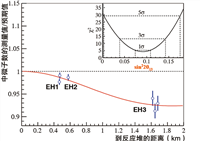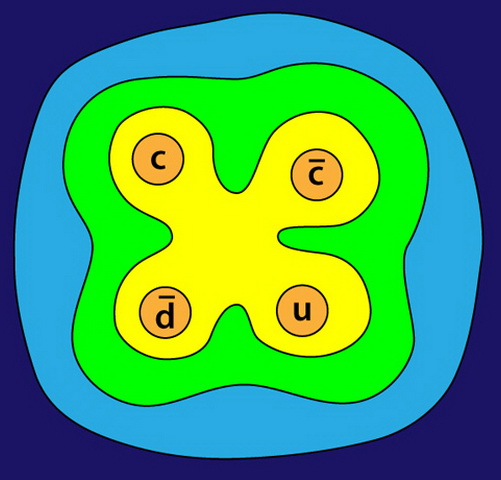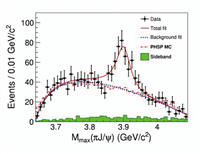Research Themes
Particle Physics
|
Particle physics looks at the most fundamental structure of the universe – the particles that are its most basic building blocks, and the ways they interact with each other. Particle physics theorists try to understand how and why it all works, using mathematics and results from experiments to develop theories. Particle physics experiments test the theories and look for unexpected new results that can tell us more of the secrets of the universe. Particle physics at IHEP includes both theoretical and experimental research. There are two types of particle physics experiment – those that use particle accelerators, and those that don’t. Accelerator-based experiments collide subatomic particles at very high energies, and study the new particles produced in the collisions. Non-accelerator-based experiments study particles from other sources, such as the Sun, cosmic rays, and nuclear reactors. IHEP’s accelerator-based research is currently centered on the Beijing Spectrometer (BESIII) experiment, which is a large detector installed at the BEPCII accelerator in Beijing. IHEP is also a collaborator in many international high energy physics experiments, such as ATLAS and CMS at the Large Hadron Collider at CERN, and Belle II at Super KEKB in Japan. The BESIII experiment, and its precursors BES and BESII, have made a series of important discoveries. The Beijing Electron-Positron Collider (BEPC) collider ran from 1988 to 2004, followed by its upgrade BEPCII, which has run from 2008 to the present day. The long-term and stable operation of BEPC and BEPCII has made it possible to obtain the largest data samples of J/ψ, ψ(2S), and ψ(3770) in the world. The physics results obtained include the precise measurement of the tau mass, precise measurements of hadron production in the energy range of 2-5 GeV, and the discovery of a new particle, the X(1835). In March 2013, the BESIII collaboration reported that the Y(4260) particle decays to a new and perhaps even more mysterious particle, the Zc+(3900). A proposed future high energy accelerator facility is the Circular Electron-Positron Collider (CEPC), which would produce large quantities of Higgs bosons and allow precision measurements of the properties of the Higgs boson, as well as precision tests of the Standard Model through the study of the Higgs boson as well as the electron-positron collision events at high energies. The accelerator could then be upgraded to a Super Proton-Proton Collider (SppC), which would run at the unprecedentedly high energy of 50 – 70 TeV and allow direct searches for new physics beyond the Standard Model. IHEP also several strong, non-accelerator-based particle physics programme, particularly in neutrino physics. The Daya Bay Neutrino Experiment, based at the Daya Bay nuclear power plant in Guangdong province, has been running since 2011. This experimental collaboration announced its first breakthrough result in 2012, the discovery of the third type of neutrino oscillation and the measurement of the neutrino mixing angle θ13. A much bigger neutrino experiment, the Jiangmen Underground Neutrino Observatory (JUNO) is currently under construction at a site that is near the city of Jiangmen in Guangdong province.
|
In the winter of 2012 - 2013, BESIII began a dedicated study of the Y(4260) structure found by the B-factory experiment BaBar at SLAC. A striking and unexpected first observation from this new study was the existence of a new charged particle, the Zc+(3900), that appeared in Y(4260) decays.
BES made precise measurements of the cross sections of the electron position annihilations in the center-of-mass energies ranging from 2 GeV to 5 GeV. The experiment improved the precision of the Fine Structure Constant α (Mz2) by a factor of two and greatly improved the prediction accuracy of the Standard Model for the Higgs mass.
|




